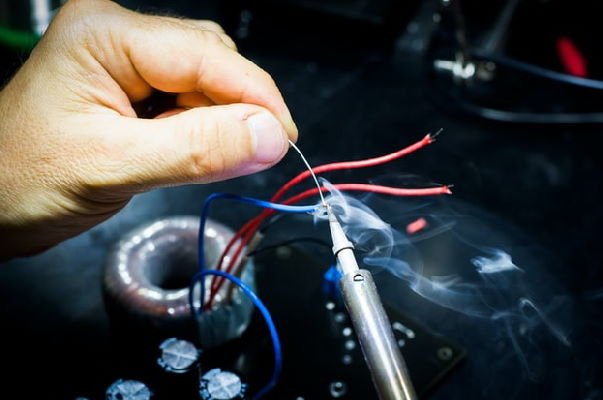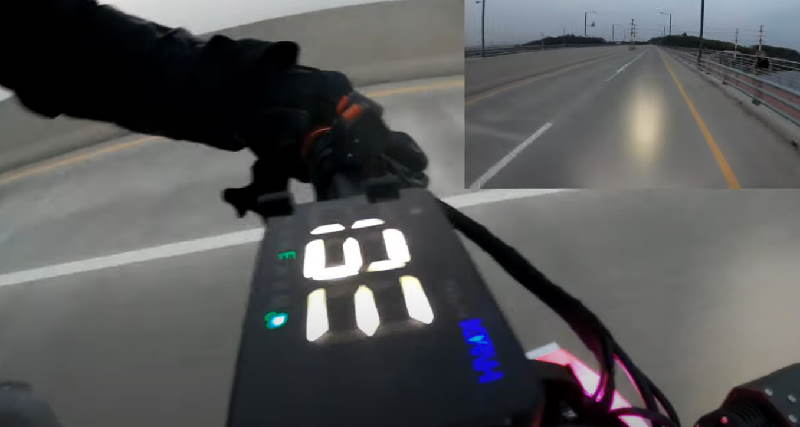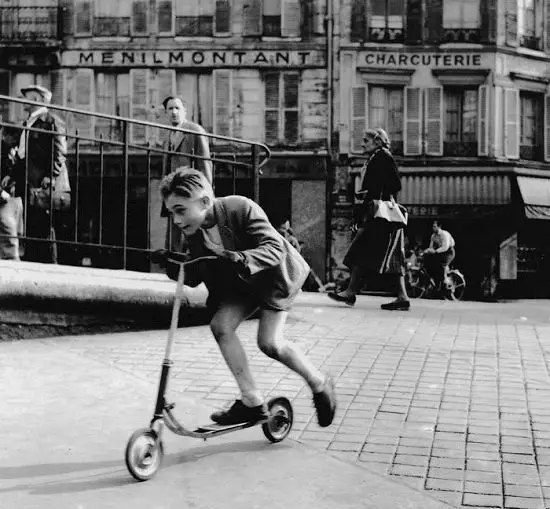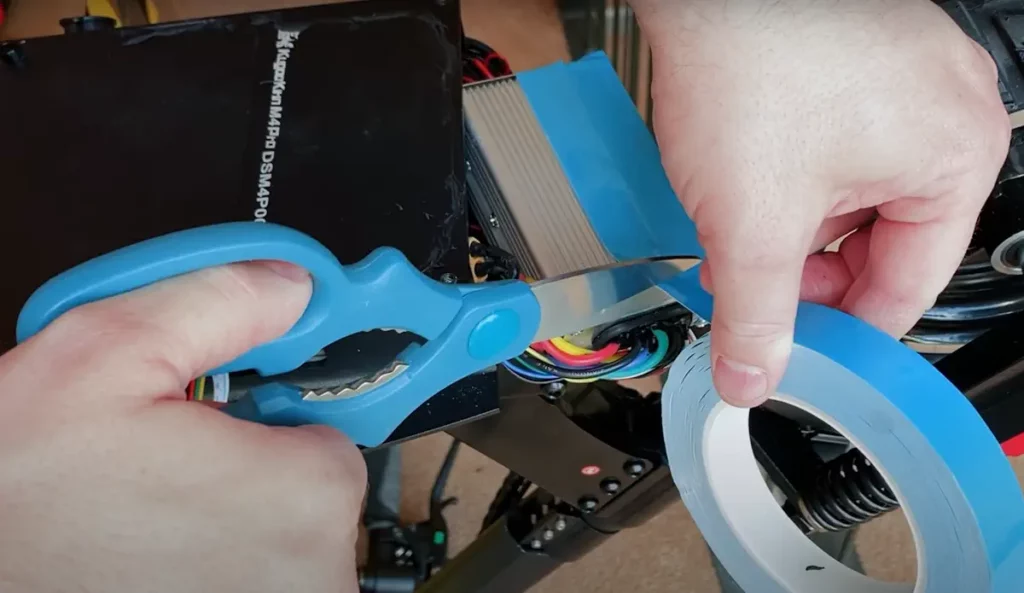Many of us have experienced it: you order a new scooter, eagerly await its arrival, unbox it, assemble it, head outside, press the power button, and… nothing!
This research on e-scooter problems, defects, and reliability helps you choose models less likely to arrive defective or fail shortly after purchase.
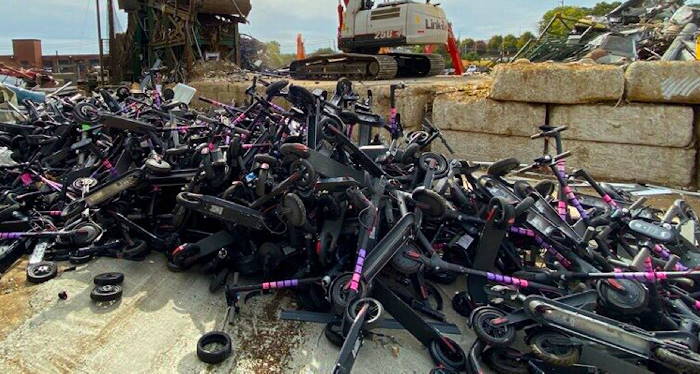
Electric scooter problems
The following table explains the frequency of the most common electric scooter defects.
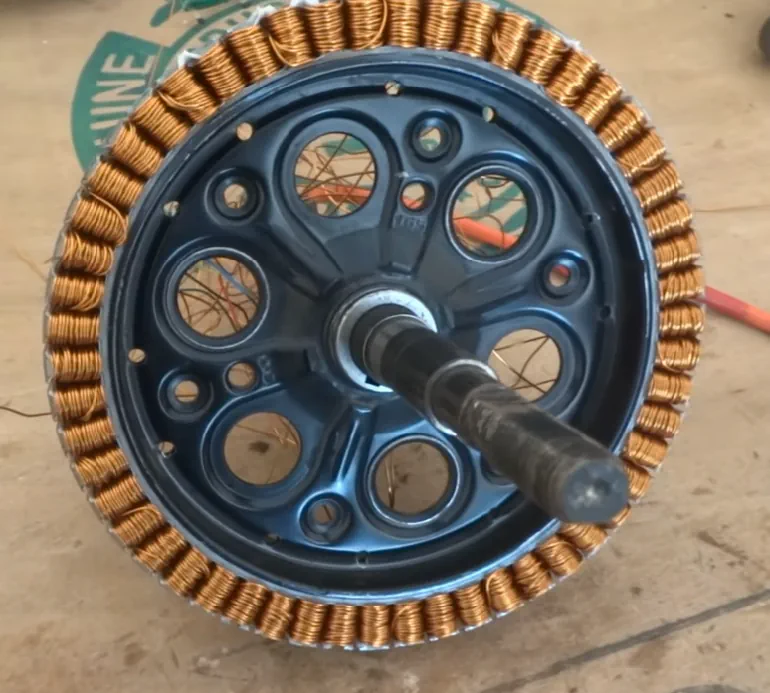 Electronics: 32.17%Severity: criticalRepair: difficultErratic acceleration or braking, unresponsive controls, faulty sensors, incorrect software or firmware
Electronics: 32.17%Severity: criticalRepair: difficultErratic acceleration or braking, unresponsive controls, faulty sensors, incorrect software or firmware Battery: 19.56%Severity: moderateRepair: moderateCommon defects include rapid battery drain, inconsistent charging, overheating, electrolyte leaks, loose connections, and improper battery management.
Battery: 19.56%Severity: moderateRepair: moderateCommon defects include rapid battery drain, inconsistent charging, overheating, electrolyte leaks, loose connections, and improper battery management.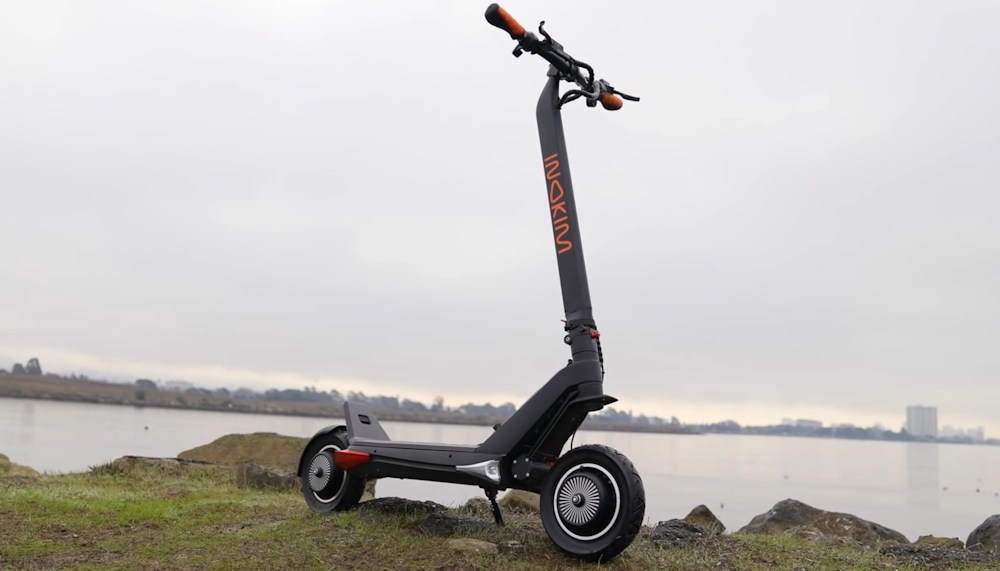 Quality: 15.10%Severity: criticalRepair: difficultManufacturing errors, wear and tear, or external factors that can manifest in various ways, affecting the scooter’s performance, safety, or overall usability.
Quality: 15.10%Severity: criticalRepair: difficultManufacturing errors, wear and tear, or external factors that can manifest in various ways, affecting the scooter’s performance, safety, or overall usability.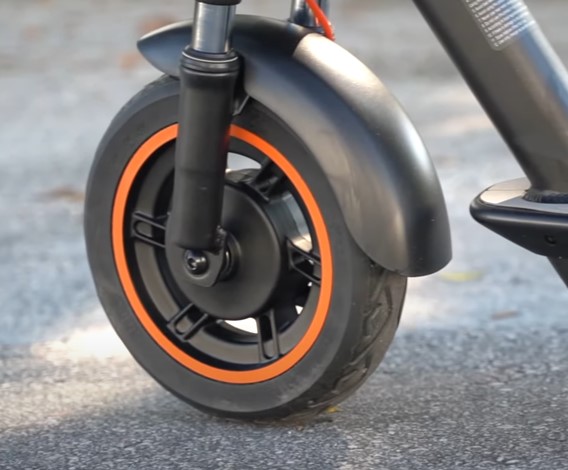 Wheels, fenders, and tires: 12.46%Severity: moderateRepair: moderateCommon issues include flat tires, misalignment, fender cracks, tire wear, and improper inflation.
Wheels, fenders, and tires: 12.46%Severity: moderateRepair: moderateCommon issues include flat tires, misalignment, fender cracks, tire wear, and improper inflation.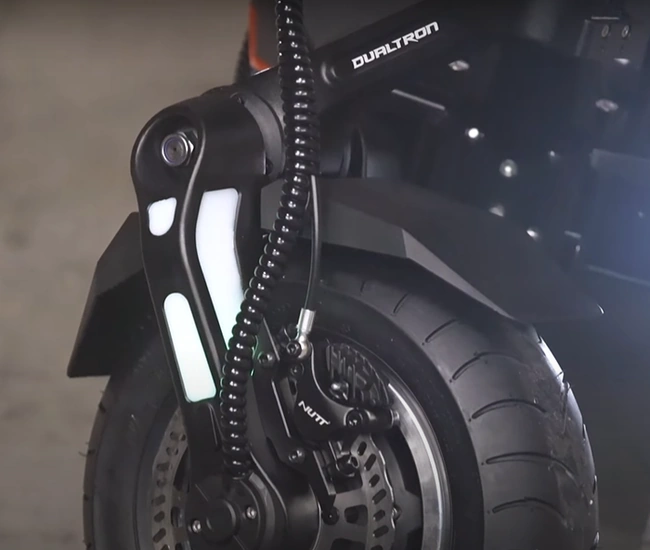 Brakes: 6.18%Severity: criticalRepair: moderateIncludes leaking brake fluid, faulty brake lever and damaged brake rotors.
Brakes: 6.18%Severity: criticalRepair: moderateIncludes leaking brake fluid, faulty brake lever and damaged brake rotors.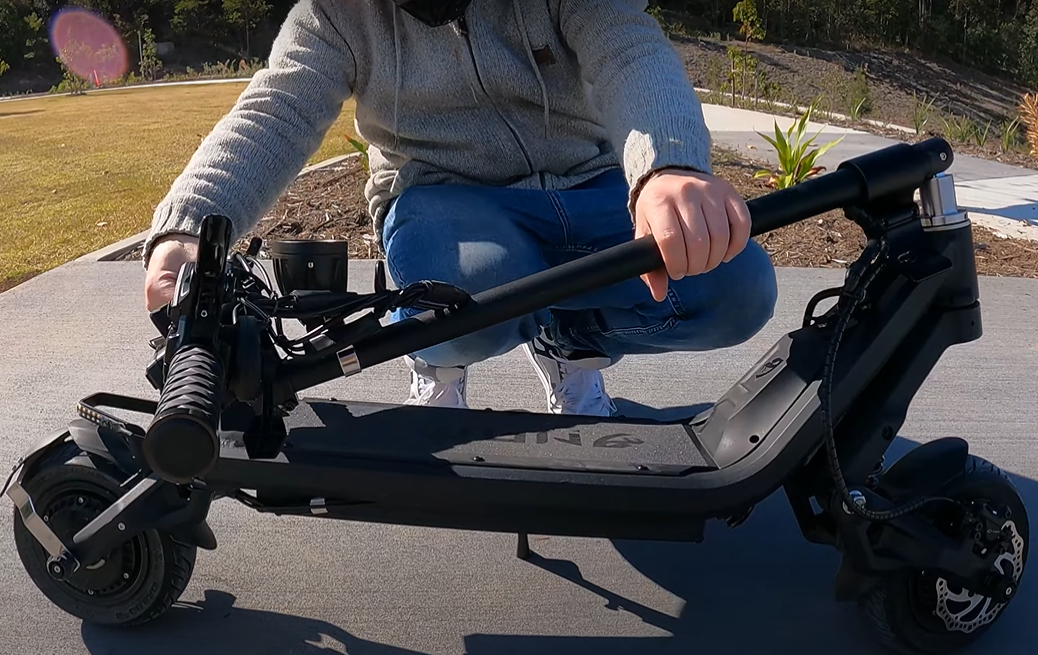 Folding mechanism: 5.18%Severity: criticalRepair: difficultCommon defects include loose or damaged hinges, weak or broken folding locks, misaligned folding mechanisms, damaged folding brackets, faulty folding cables or wires, inadequate lubrication, corrosion or rust, and damaged paint or finish.
Folding mechanism: 5.18%Severity: criticalRepair: difficultCommon defects include loose or damaged hinges, weak or broken folding locks, misaligned folding mechanisms, damaged folding brackets, faulty folding cables or wires, inadequate lubrication, corrosion or rust, and damaged paint or finish.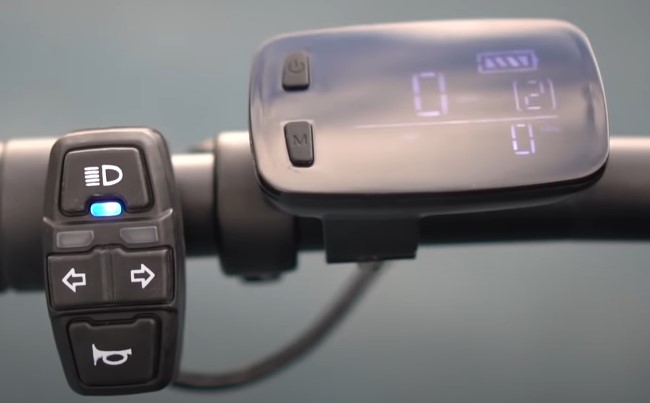 Controls: 3.55%Severity: moderateRepair: moderateFaulty throttle or brake controls, malfunctioning ECU or controller, damaged handlebar controls, poor wiring, BMS issues, firmware or software glitches, and malfunctioning safety features.
Controls: 3.55%Severity: moderateRepair: moderateFaulty throttle or brake controls, malfunctioning ECU or controller, damaged handlebar controls, poor wiring, BMS issues, firmware or software glitches, and malfunctioning safety features.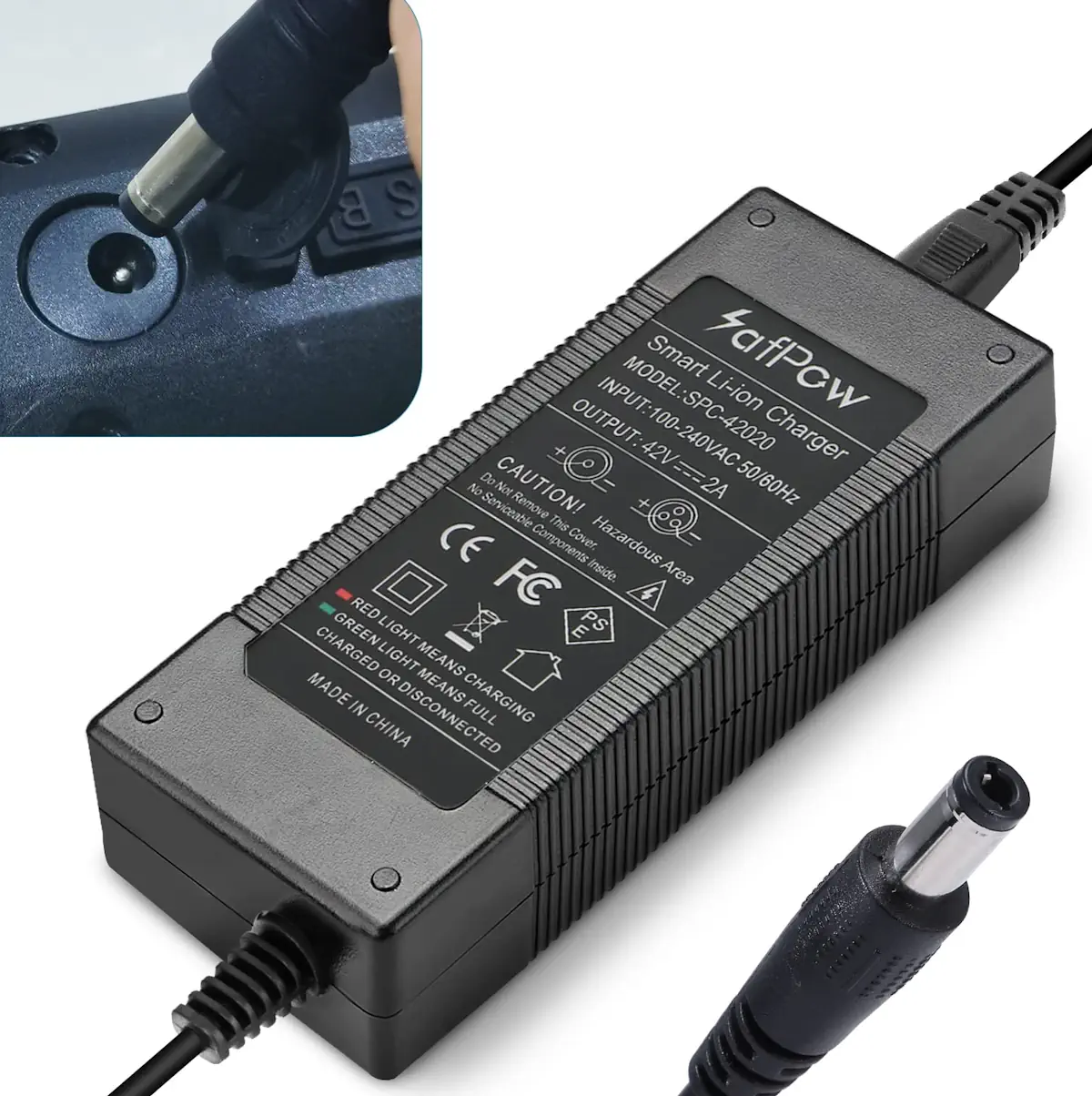 Charger: 2.73%Severity: lowRepair: easyThe main concerns with the charger are overheating, faulty wiring, incorrect voltage, loose or damaged connectors, improper temperature protection, and improper polarity protection.
Charger: 2.73%Severity: lowRepair: easyThe main concerns with the charger are overheating, faulty wiring, incorrect voltage, loose or damaged connectors, improper temperature protection, and improper polarity protection.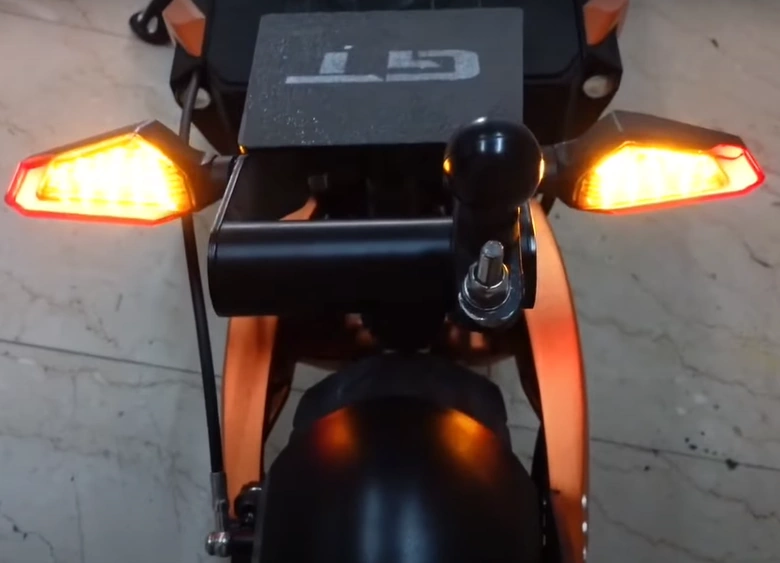 Lights: 1.53%Severity: lowRepair: eaayFaulty headlights, malfunctioning turn signals, and non-functioning brake lights, which can jeopardize safety on the road.
Lights: 1.53%Severity: lowRepair: eaayFaulty headlights, malfunctioning turn signals, and non-functioning brake lights, which can jeopardize safety on the road.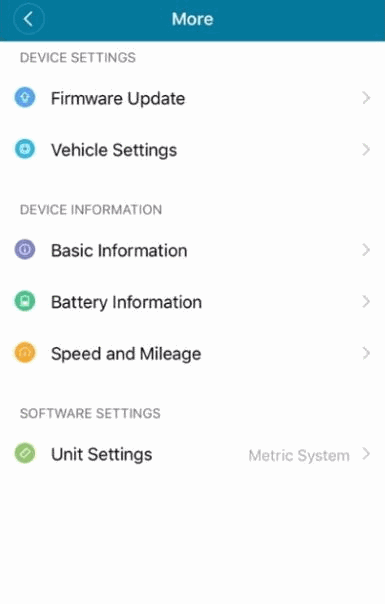 Application: 1.53%Severity: moderateRepair: difficultSoftware or electronic malfunctions in the scooter’s control system, including issues with the app interface, connectivity problems, firmware errors, and software-controlled features like speed limits.
Application: 1.53%Severity: moderateRepair: difficultSoftware or electronic malfunctions in the scooter’s control system, including issues with the app interface, connectivity problems, firmware errors, and software-controlled features like speed limits.
In addition to defect rates, we can also learn a lot by analyzing the specific defect types for each scooter.
The table below shows the defect counts categorized by type for popular e-scooters.
This table is highly valuable as it pinpoints each scooter’s specific weaknesses, enabling you to make a more informed purchasing decision aligned with your scooter requirements and priorities.
Additionally, the table includes the total number of reviews as a reference for defect frequency.
| Electric Scooter | N. Reviews | N. Quality Defects | N. Electronics Defects | N. Battery Defects | N. Charger Defects | N. Controls Defects | N. Brakes Defects | N. Wheels Defects | N. Fold Defects | N. Lights Defects | N. App Defects |
|---|---|---|---|---|---|---|---|---|---|---|---|
| Ninebot E45 | 3102 | ||||||||||
| Ninebot E22E | 30 | ||||||||||
| Xiaomi 1S | 1169 | 1 | 2 | 3 | 4 | 5 | |||||
| Ninebot Zing E8/E10 | 2104 | 8 | 23 | 7 | 10 | 1 | 1 | ||||
| Hiboy Titan | 79 | 2 | |||||||||
| Ninebot Max | 8982 | 12 | 60 | 11 | 1 | 4 | 4 | 1 | 2 | 3 | |
| Ninebot E25E | 36 | 1 | |||||||||
| Xiaomi 1S/Essential/Pro 2 | 1064 | 8 | 9 | 10 | 1 | 1 | 2 | 2 | 2 | ||
| EverCross | 441 | 7 | 4 | 1 | 3 | 1 | 1 | ||||
| Hiboy S2 Pro | 4945 | 11 | 14 | 8 | 3 | 6 | 4 | 2 | 4 | 1 | |
| Ninebot Air T15 | 103 | 1 | |||||||||
| Macwheel MX Pro | 629 | 14 | 11 | 3 | 1 | 1 | 1 | ||||
| GoTrax GXL | 507 | 3 | 15 | 4 | 4 | ||||||
| GoTrax XR Elite | 675 | 4 | 17 | 10 | 1 | 3 | 2 | 1 | |||
| GoTrax XR Ultra | 3103 | 9 | 33 | 23 | 1 | 6 | 3 | 5 | 2 | ||
| Uberscoot 1600W | 337 | 5 | 5 | 4 | 1 | 1 | |||||
| Glion Dolly | 1058 | 12 | 13 | 16 | 3 | 2 | 14 | 1 | 6 | 1 | |
| GoTrax GXL V2 | 8983 | 36 | 120 | 99 | 17 | 15 | 24 | 24 | 5 | 5 | |
| Hover 1 Alpha | 2346 | 11 | 9 | 7 | 1 | 7 | 3 | 7 | 6 | ||
| Ninebot ES4 | 1396 | 10 | 55 | 16 | 1 | 14 | 1 | 4 | 1 | 3 | |
| Ninebot E22 | 1333 | 24 | 39 | 14 | 4 | 5 | 7 | 1 | 6 | 3 | |
| Hiboy Max | 37 | 1 | 1 | 1 | |||||||
| Hiboy S2 | 2715 | 21 | 34 | 16 | 6 | 4 | 6 | 1 | 7 | 2 | 3 |
| Swagtron Swagger 5 | 879 | 26 | 45 | 25 | 2 | 5 | 3 | 9 | 3 | 3 | |
| GoTrax G4 | 440 | 11 | 27 | 19 | 5 | 6 | 6 | 5 | 1 | 1 | |
| Xiaomi M365 | 2367 | 42 | 72 | 69 | 3 | 4 | 17 | 181 | 35 | 7 | 6 |
| GoTrax Glider | 75 | 4 | 1 | 5 | 1 | 1 | 1 | 2 | |||
| Swagton Swagger Pro | 1511 | 9 | 11 | 2 | 3 | 3 | 2 | ||||
| Swagtron Swagger 1 | 429 | 27 | 50 | 34 | 5 | 7 | 17 | 14 | |||
| Total | 57037 | 315 | 671 | 408 | 57 | 74 | 129 | 260 | 108 | 32 | 32 |
The defects are grouped as follows:
- quality: general defect type, serves as a catch-all category for unspecified defects (like reports saying “doesn’t work” or “broke down after a week”, for example)
- electronics: any defect involving the motor, controller, dashboard, or the scooter’s electronic circuit that renders it unusable, inlcuding screen errors that cannot be fixed by the owner and require the scooter to be returned to the manufacturer.
- battery: defects related to the battery, including the battery dying but also the scooter having a much smaller range than advertised
- charger: any defect where the charger is the main cause
- controls: defects related to various throttles, buttons, triggers, levers, or handlebars, that impact the scooter seriously and prevent its usage
- brakes: any major defects that cause the brakes to malfunction
- wheels: defects related to the wheels, fenders, and tires (including suffering a flat tire which is too difficult or impossible for the owner to fix)
- fold: serious defects of the folding mechanism
- lights: any defect that causes the lights to not work
- app: defects associated with the app, typically the inability of the user to connect the scooter to the app via Bluetooth, often resulting in the scooter being unable to power on.
The leading electric scooter defects, responsible for 32% of critical issues, involve faulty electronics, often rendering the scooter non-functional. This category encompasses issues like power failure, acceleration problems, and damaged controllers or wiring.
Battery defects contribute to roughly 20% of all issues, with general quality concerns making up 15%, while wheel and tire problems are present in approximately 12% of scooters.
Flat tire problem with Xiaomi scooters
One of the most significant and notorious issues in scooter models is the frequent flat tires in the Xiaomi M365, making up 65% of wheel and tire complaints.
To deal with the Xiaomi scooters flat tire problem, you can implement several solutions:
- Regular maintenance – to prevent flat tires, make sure your tires are properly inflated. Check the air pressure regularly and keep them within the recommended range, which is typically indicated on the tire sidewall.
- Puncture-resistant tires – consider replacing your Xiaomi scooter’s tires with puncture-resistant or solid tires. While these may provide a less cushioned ride, they greatly reduce the risk of flat tires.
- Avoid rough terrain: – be cautious when riding on rough or uneven surfaces, as they increase the likelihood of punctures. Try to stick to smoother paths and roads.
However, Xiaomi deserves credit for effectively resolving this problem in newer models, such as the Xiaomi 1S, Essential, and Pro 2. Flat tire reports in these popular models are now minimal.
App problems
I debated whether to cover app defects in this research because they aren’t always directly linked to the scooter. However, since the scooter app is crucial for many scooters and often required for their use, I included cases of faulty apps as defects.
Fortunately, there were only 32 app defects, making up just 1.5% of all reported issues.
Swagtron quality issues
I typically don’t dismiss scooters based on a few negative online reviews. Those might be affordable options for individuals on a tight budget willing to take a chance.
However, I can’t recommend Swagtron scooters. They consistently have the lowest ratings and the highest defect rates across various categories. Additionally, their prices have increased recently, and for the amounts Swagtron charges, you can easily find higher-quality scooters elsewhere.
The best solution for addressing the problem is to consider alternative scooter brands with better reliability and customer satisfaction. Research and choose a scooter from reputable manufacturers known for producing high-quality and durable electric scooters.
Electric scooters with best and worst batteries
Battery issues can be frustrating, and sometimes a weak battery is worse than a dead one due to warranty limitations.
It’s crucial to ensure your chosen scooter has a robust battery that offers the expected range and performance.
The top electric scooters with reliable batteries that deliver promised performance include:
- Xiaomi 1S: 0.26% battery defect rate (read the review or see on Amazon UK)
- Ninebot Max: 0.29% battery defect rate (read the review or see on Amazon)
- Ninebot Zing: 0.33% battery defect rate (see on Amazon)
- Macwheel MX Pro: 0.48% battery defect rate (read the review or see on Amazon)
- Ninebot E22: 0.56.% battery defect rate (read the review or see on Amazon)
- Hiboy S2 Pro: 0.69% battery defect rate (read the review or see on Amazon)
- GoTrax GXL: 0.79% battery defect rate (read the review or see on Amazon)
- Xiaomi 1S/Essential/Pro 2: 0.94% battery defect rate (read the 1S review/Essential review/Pro 2 review or see all on Amazon UK)
The electric scooters with the worst batteries today are:
- Swagtron Swagger: 7.93% battery defect rate
- GoTrax Glider: 6.67% battery defect rate
- Ninebot Air T15: 4.76% battery defect rate
- GoTrax G4: 4.32% battery defect rate
To ensure the extended lifespan of your battery, you should:
- steer clear of extreme temperatures like direct sunlight or freezing cold when storing or charging your scooter;
- use only the charger that was supplied with your scooter or one designed explicitly for your scooter’s battery;
- avoid overcharging, which can harm the battery;
- keep the battery terminals clean by regular cleaning to prevent corrosion. Lastly, when your scooter is not in use, store it in a cool, dry location.
These steps will help maintain your scooter’s performance and battery life.
Dead-on-arrival electric scooters
Many electronic defects become evident right after unpacking the newly arrived scooter, with issues like failure to turn on, acceleration problems, and frequent error codes on the screen.
Around 32% of all defects are electronics-related, and for some models, dead-on-arrival scooters make up a significant portion of these issues.
While receiving a broken scooter after waiting eagerly is frustrating, most warranties cover this type of defect. You can simply return the scooter to the manufacturer, and they will replace or repair it, often offering a full refund.
However, be cautious with brands known for poor or slow customer support, as delayed responses may affect your warranty claim. Brands like Xiaomi tend to have fewer complaints about their customer support.
Most dangerous electric scooter defects
While dead-on-arrivals, app problems, and weak batteries are inconvenient, certain defects pose serious safety risks. Although electric scooters are generally safe, a few owners have encountered severe defects during their rides, such as the fold or stem breaking, or brake failures.
These issues are particularly concerning as they often happen while riding, resulting in mild to moderate injuries for some owners (fortunately, no fatalities have been reported).
If safety is your top priority, consider avoiding scooters with a history of folding mechanism or brake defects. Notably, the Swagtron Swagger Pro and the Swagtron Swagger 1 have faced issues in this regard. Some early Xiaomi M365 batches also had brake problems, but this has been resolved in later batches.
Electric scooter defect rates
To understand electric scooter defects, I reviewed ratings and reviews for the top-selling electric scooters on Amazon, collecting data on defective or malfunctioning scooters within 12 months. This analysis will assist you in assessing the risk of early breakdown and deciding if it’s worth considering.
| Electric Scooter | Avg. Rating | N. Reviews | N. 1-star | N. 2-star | N. Total Defects | Est. Defect Rate |
|---|---|---|---|---|---|---|
| Ninebot E45 | 4.3 | 3,102 | 279 | 95 | 0 | |
| Ninebot E22E | 4.6 | 30 | 0 | 0 | 0 | |
| Xiaomi 1S | 4.6 | 1169 | 27 | 8 | 15 | 1.28% |
| Ninebot Zing E8/E10 | 4.6 | 2104 | 60 | 6 | 50 | 2.38% |
| Hiboy Titan | 4 | 79 | 3 | 1 | 2 | 2.53% |
| Ninebot E22 | 4.3 | 8,982 | 1,071 | 342 | 9 | 2.54% |
| Ninebot Max | 4.5 | 6,781 | 433 | 119 | 95 | 2.6% |
| Ninebot E25E | 4.1 | 36 | 2 | 1 | 1 | 2.78% |
| Xiaomi 1S/Essential/Pro 2 | 4.3 | 1064 | 47 | 10 | 35 | 3.29% |
| EverCross | 4.1 | 441 | 35 | 13 | 17 | 3.85% |
| Hiboy S2 Pro | 4.4 | 4945 | 383 | 125 | 51 | 4.55% |
| Ninebot Air T15 | 3.1 | 103 | 35 | 7 | 1 | 4.76% |
| Macwheel MX Pro | 4.2 | 629 | 34 | 14 | 31 | 4.93% |
| GoTrax GXL V2 | 4.3 | 8,983 | 1,071 | 342 | 25 | 5.13% |
| GoTrax XR Elite | 4.3 | 675 | 36 | 7 | 38 | 5.63% |
| GoTrax XR Ultra | 4.3 | 3,103 | 279 | 95 | 80 | 5.66% |
| Uberscoot 1600W | 3.8 | 337 | 44 | 17 | 14 | 6.32% |
| Glion Dolly | 4.3 | 1058 | 58 | 28 | 68 | 6.43% |
| Hover 1 Alpha | 3.3 | 2346 | 572 | 123 | 42 | 7.37% |
| Ninebot ES4 | 4.1 | 1396 | 112 | 33 | 105 | 7.52% |
| Ninebot E22 | 4.3 | 2002 | 198 | 47 | 100 | 7.73% |
| Hiboy Max | 4.2 | 37 | 3 | 2 | 3 | 8.11% |
| Hiboy S2 | 4.4 | 2715 | 178 | 61 | 107 | 8.25% |
| Swagtron Swagger 5 | 3.2 | 1511 | 516 | 176 | 101 | 13.77% |
| GoTrax G4 | 4.4 | 440 | 29 | 9 | 81 | 18.41% |
| Xiaomi M365 | 3.9 | 2367 | 341 | 143 | 436 | 18.42% |
| GoTrax Glider | 2.9 | 75 | 15 | 2 | 13 | 20% |
| Swagton Swagger Pro | 3.1 | 98 | 30 | 39 | 3 | 30.61% |
| Swagtron Swagger 1 | 3 | 429 | 112 | 38 | 154 | 35.9% |
| Average/Total | Avg. 4.03 | Total 57037 | Avg. 207 | Avg. 65.6 | Total 1677 | Avg. 7.32% |
We can observe a lot of interesting facts from this data. Let’s dive into the most useful conclusions about the quality of electric scooters.
Average electric scooter defect rate
Out of the 28510 electric scooter reviews combined, owners have reported major defects and malfunctions that have rendered their scooters useless in less than a year in 2086 cases, across the most popular electric scooter models in the world.
Meaning, there’s about a 7.32% chance that a popular budget scooter may suffer a serious defect in the first year of ownership.
Not bad, especially for budget scooters. As seen in the table above, popular budget models like the Ninebot Max or Xiaomi 1S have less than a 3% chance of a serious defect in the first year.
Remember, the actual defect rate is likely even smaller, possibly orders of magnitude less. Online reviews represent a small fraction of customers (0.5% – 1%), and most negative reviews come from those with defects.
A 7.32% chance of a defect in the first year is reasonable, given the complexities of an electric scooter. It’s about 1 in 14 budget scooters, which, although frustrating when it happens, is good for a complex electronic gadget.
Keep in mind that defect rates vary widely between models.
Most popular scooters have less than a 7% chance of early issues, while a few low-quality models, like Swagtron and the first Xiaomi model, drive up the defect rate. Avoiding those models significantly reduces the risk of early malfunctions.
Best quality electric scooters
To determine the top-quality electric scooters, we need to refine the data. We’ll focus on scooters with over 100 reviews, ensuring thorough testing by a substantial number of users in various scenarios.
Now, let’s explore the highest-quality electric scooters in 2023.
The electric scooter with the smallest defect rate is the Ninebot Max G30P. This scooter has a defect rate of just 0.1%, which is significantly lower than the industry average of 5%. It also has a 4.5-star rating on Amazon, with over 25,000 reviews.
Other popular scooters of great quality are:
- Ninebot Zing E8/E10, 2.5% defect rate (see on Amazon)
- Ninebot E22, 0.8% defect rate (read the review or see on Amazon)
- Ninebot Max, 1.2% defect rate (read the review or see on Amazon)
- Hiboy S2 Pro, 1.8% defect rate (read the review or see on Amazon)
- Xiaomi 1S/Essential/Pro 2, 1.5%/ 1.2% / 1.3% defect rate (read the 1S review/Essential review/Pro 2 review or see all on Amazon UK)
- EverCross, 3% defect rate (read the review or see on Amazon)
Worst electric scooters
The worst-quality electric scooter today seems to be the Swagtron Swagger 5. It has a defect rate of 5.2% and 3.2 stars on Amazon as of August 4, 2023. This is based on over 1,500 reviews.
Other poor-quality scooters include the Gotrax GXL V2 , with a high defect rate of 4.8%, the Hiboy S2 with a defect rate of 4.5%, and the Hover-1 Journey with a defect rate of 4.2%.
Methodology and things to keep in mind
It’s important to note that the number of scooter defects alone doesn’t provide the complete picture. The number of total units sold should always be taken into account.
However, as it’s nearly impossible to determine the exact number of units sold, the defect rate calculated here will appear much higher than the actual defect rate because we divide defects by the total number of reviews. The true defect rate should be calculated by dividing the total defects by the total units sold.
Additionally, while most dissatisfied customers report defects online, some may not, though most unhappy owners do report defects with strong feedback. This somewhat balances defect rates, indicating they may not be too low but still likely not entirely accurate.
So, the defect rate reflects how one scooter model compares to others in defect incidence but overestimates real-world defect rates.
In addition to the total reviews and defects, we consider the scooter’s average rating, 1-star, and 2-star reviews (data collected in June 2021). Only reviews from verified buyers are included.
I counted defects individually in each review. For instance, if an owner reported both brake failure and a dead battery, that single review contributes two defects. I excluded 1-star and 2-star reviews related to customer support or delivery issues, as they don’t affect the scooter’s overall quality.
Since Amazon provides comprehensive scooter reviews, it’s the primary data source. Other retailers like Walmart and Target have limited data, and data from scooter brands’ online shops were excluded because they filter out negative reviews, particularly 1-star and 2-star ones, crucial for calculating defect rates.
It’s important to note that all these scooters cost less than $1000, with some below $300, primarily focusing on budget-priced models. More expensive scooters typically have lower defect rates.
One limitation is the lack of data for some models. I excluded scooters with only a few reviews to avoid misleading impressions. It’s vital to consider the broader context. For example, the Ninebot E22 may appear flawless, but its low review count may contribute to the absence of negative reviews rather than perfect performance.


